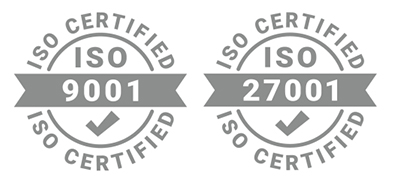You can implement all the most expensive and advanced cybersecurity tools on the market, but if you’re not following cybersecurity best practices, you’re still very much vulnerable to cyberattacks. Human error remains the leading cause of data breaches, so you need to ensure that your entire workforce follows best practices, such as cybersecurity do’s and don’ts, to keep your business protected.
Implementing Effective Cybersecurity Strategies
Best practices are the foundation of effective cybersecurity strategies. With an in-depth cybersecurity strategy, you can look at the big picture and prevent vulnerabilities that might slip through the cracks.
Your cybersecurity strategy should include effective cybersecurity measures and thorough security policies, since your organisation will refer to this plan not just when making key decisions or upgrading your IT, but also when conducting day-to-day activities.
Top Cybersecurity Tips for Businesses
Here are some practical cybersecurity tips that implement IT security best practices:
- Limit Access Controls:
Don’t let just anyone access your network and data. Restrict access not only to outsiders but to your employees as well. If their role does not require access to certain sensitive data, they should not have it.
- Encourage and Reward Reporting:
To promote continual improvement, employees should be recognised and rewarded for spotting potential security issues and reporting them.
- Audit and Assess:
You can’t cover all your bases effectively unless you know what your vulnerabilities are. Thoroughly audit and assess every aspect of your IT network for weaknesses, and address them to eliminate security gaps.
How to Protect Your Business from Cyberattacks
To protect your business from cyberattacks, you don’t simply implement security tools; you need to ensure that they are being used correctly. Here are some ways you can safeguard your business from cyberthreats:
- Enable multifactor authentication whenever possible to reduce the risk of unauthorised access.
- Install cybersecurity monitoring tools to keep an eye on who accesses what data and when.
- Implement email filtering, and teach your employees how to spot and report suspicious emails.
- If you have remote workers, utilise mobile device management solutions to prevent data and access from falling into the wrong hands.
Preventing Cyberattacks: Best Practices
The best way to limit your risk is to prevent cyberattacks from occurring in the first place. But even if you’re using any proactive tool against cyberthreats, it will still need effective management. Make sure you set specific schedules for updating security tools and performing routine maintenance — outdated systems are vulnerable systems.
Another simple way to prevent cyberattacks is to educate your workforce. Remember, human error accounts for the vast majority of cyberattacks, so equip your workers with skills on how to recognise, respond to, and report potential cyberthreats.
Safeguarding Your Business with IT Security Best Practices
To fully safeguard your business from cyberthreats, you must implement IT security best practices that cover the aftermath of a successful attack. No defenses are perfect, but it’s better to have a plan and never need it, rather than not having it when you need it most.
That’s why no set of IT security best practices is complete without a data backup policy and a disaster recovery plan (DRP). These entail setting your recovery time objective and recovery point objective so that you can implement an automated data backup system that meets your unique needs.
Then, draft a DRP that lays out what every employee needs to do to quickly bounce back after a cyberattack. With a detailed plan in writing, you can reduce panic and accelerate recovery should the worst happen. But remember that you must rehearse your DRP so employees can confidently carry out their responsibilities during a crisis.
Effective Measures for Cybersecurity Management
Unfortunately, implementing effective cybersecurity measures is the easy part; managing them and maintaining their effectiveness takes more work. The good news is there are a variety of tools you can use and strategies you can follow to make this easier.
One of the most important things you need to do is centralise your security tools. By utilising cybersecurity management and monitoring software, you can control and configure your security tools from a central platform. Doing so better visibility into their activities and the threats they face. It may cost more, but the savings in time and effort are worth it.
However, perhaps the simplest way to manage your cybersecurity policies and tools is to outsource the work to qualified professionals. The managed security services industry is booming, which means you can get enterprise-grade cybersecurity tools and management for a budget-friendly price.
Professional Cybersecurity Management in Melbourne
Keeping track of up-to-date cybersecurity best practices is a daunting task, but you don’t have to do it alone. Techware provides businesses of all kinds in Victoria with comprehensive IT services, including managed security services. We can advise on the cybersecurity best practices your business should be following, as well as implement and manage the security tools your company needs to stay safe against the evolving online threatscape.
Contact us today and get started with an IT audit and risk assessment.


Leave a comment!